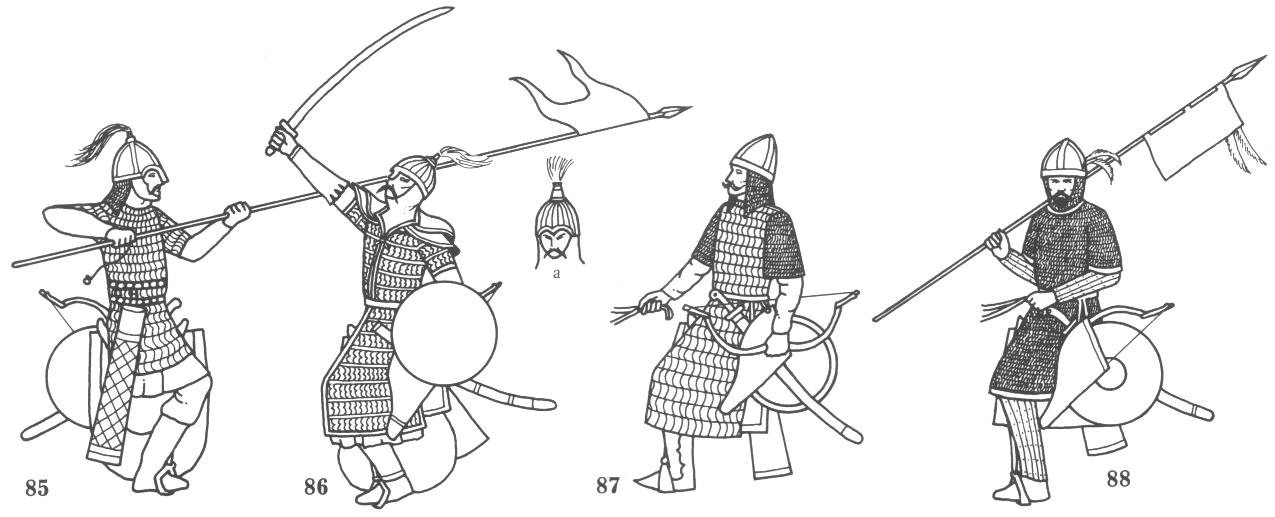
Try Amazon Audible Plus
Asiatic Heavy Cavalrymen
An extract from Armies of the Dark Ages 600-1066by Ian Heath
 | |||
| [Based on a rock carving at Seljek, Siberia] | [Based on a Clay figure. Armoured Cavalryman from Šōrčuq at Qarasahr, Tarim Basin. Helmet perhaps from a Manichaean Silk Painting from Chotscho] | [A similar horseman on a dish from Muzhi] | [Based on a ewer from Nagyszentmiklós] |
